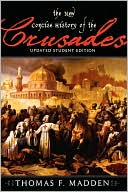who are they?- where are they from?- what place do they have-
in the Biblical text,
in the story of salvation and
in relation to Jesus specifically.
#2 is here
the intro to the study is here
Hezron
The older of the two sons of Pharez (Perez) (Gen. 46:12).
Ram
The son of Hezron, and one of the ancestors of the royal line of King David and Jesus Christ (Ruth 4:19). The marginal notes for 1 Chr. 2:9, Matt. 1:3,4 and Luke 3:33 call him "Aram."
Amminadab
Father-in-law of Aaron, his daughter Elisheba was married to Aaron (Ex. 6:23). He was the father ofNahshon, who was chief of the tribe of Judah (Num. 1:7; 2:3; 7:12, 17; 10:14). He was in the lineage of Ruth (Ruth 4:18-20; 1 Chr. 2:10; Matt. 1:4; Luke 3:33).
Aquinas gives us some info on the first two in a tropological (or moral) sense:
“And Perez begot Hezron.” The name Hezron means either “arrow” or “wide entry.” If the first, it represents the sharpness of the preaching of the Kingdom of God, which penetrates into the hearts of those being converted from the idolatry of this world (Ps 44 [45]:6). If the second, it represents the breadth of Christian charity, by which Jesus loved even his enemies (Rom 5:10; Isa 53:12; Lk 23:34), and by which his followers are called upon to do the same. “And Hezron begot Ram.” The name Ram means “on high,” and it prefigures the name of Jesus, which is above “every name that is named, not only in this world but also in the one that is to come” (Eph 1:21), as well as all holy persons: “He who walks justly and speaks the truth … shall dwell on high, (and) the rocky fastnesses shall be his stronghold” (Isaiah 33:15-16). “But our citizenship is in Heaven” (Phil 3:20). (section 207 from RTF)
For an introduction of Aquinas' reading of scripture (spritual, moral etc) you can go here.
A shorter explantion can be found in this book review at MereComments:
Patristic and early medieval Christianity originally adhered to a primarily analogical (allegorical) and symbolical method of reading texts and viewing objects, in which words initially refer to objects, and the objects in turn are signs that refer to and have essential, intrinsic relations with other objects. This process establishes a unitary, interconnected network of multi-layered references, significations, and cross-referential meanings. The entire universe is thus not just a set of autonomous objects, but a spiritually, morally, and teleologically oriented system of mystical relations. Origen initially developed a three-fold system of biblical interpretation, with literal, moral, and allegorical levels of meaning, which Augustine modified into the fourfold method of literal/historical, moral/tropological, allegorical/analogical, and etiological/anagogical exegesis adopted and elaborated by the medieval Scholastics.


No comments:
Post a Comment